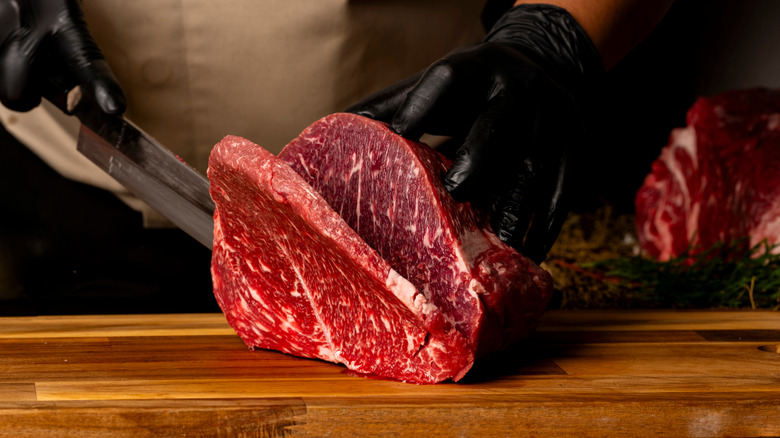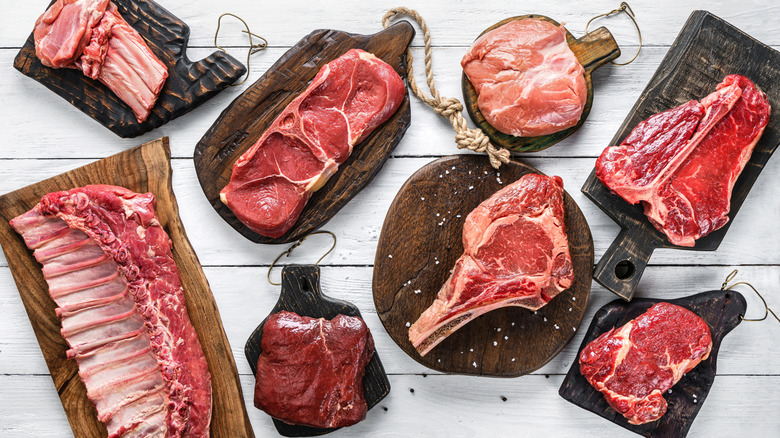The Steakhouse Meat Sourcing Red Flag That Should Raise Alarms
In many cases, a steakhouse is only as good as the meat that it cooks, and the difference between high-quality meat and low-quality meat is a big one. While not every steakhouse in the world can provide Japanese A5 Wagyu Beef — one of the highest-graded cuts of meat in the world — there's a certain baseline of quality you want a steakhouse to have. Above all else, arguably the best way to tell when a restaurant doesn't meet that criteria is if it doesn't disclose the source of the meat itself whatsoever.
The decision not to publicize the source of one's meat may seem like an inconspicuous one, but it's actually one of the most concerning things you can notice about a steakhouse. Bryan Voltaggio, co-owner of Voltaggio Brothers Steakhouse, spoke about this tendency of lower-quality steakhouses with Business Insider in 2024, reminding patrons to be inquisitive about where the food is from. "If you go to a place that can't really back up their sourcing and you're not really understanding where the meat is coming from, especially when they're charging a premium for it, then I would have concerns," Voltaggio shared. This tendency is often utilized by restaurants that freeze their meat, so seeking out steakhouses that make it clear that they serve fresh beef is a great first step when it comes to avoiding low-quality establishments.
How to know if the beef at a steakhouse is sourced from a good provider
Now, if a restaurant is open to sharing where it sources its meat from, that's a step in the right direction, but it might not always indicate the food will be high quality. Instead, in the same way that it's important to know how to read meat labels at the grocery store, understanding the information a restaurant provides you about its beef is absolutely vital. For example, if you notice that the meat is labeled as grass-fed rather than grain-fed, you'll be ordering what is widely considered to be a more natural, nutritious, and delicious form of the meat, albeit likely for a higher price.
Furthermore, another important qualification comes down to the freshness and locality of a restaurant's beef. Outside of extenuating circumstances, locally-sourced meat tastes better and is fresher than the alternative. So, if the menu itself doesn't clarify whether the meat comes from local farms but does say it's 100% grass-fed, asking your server about exactly where the meat comes from can help give further clarification on how far the beef had to travel to make its way onto your plate. All in all, knowing where that cut of steak comes from can help you ensure it's high-quality and worth the sticker price.

